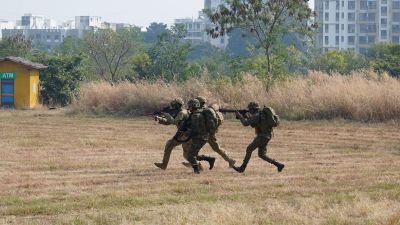Getting our goat
Immeasurable is the collateral damage of war. The hostilities that had raged along the Line of Control took a heavy toll on civilian life in...

Immeasurable is the collateral damage of war. The hostilities that had raged along the Line of Control took a heavy toll on civilian life in the area, with the regular exchange of shells between India and Pakistan forcing local villagers to leave their homes and farms and flee to safer regions. What was less obvious was the deleterious impact of war on the local environment, the devastation it routinely caused to local flora and fauna. The return of the Markhor mountain goat in the Pir Panjal — believed to have been on the verge of extinction, at least on this side of the border — is therefore a heartening sign of natural regeneration after a ceasefire that has held for almost two years.
There has not been much documentation of the state of wildlife in this theatre of war, although fears have been expressed by experts that rare local species like the snow leopard, brown bear and ibex have been forced to migrate to other regions. Not only were they more vulnerable to getting killed by coming in the line of fire, the likelihood of poaching also rises under disturbed conditions. Afghanistan is a case in point. Years of unremitting warfare are believed to have witnessed the decimation of its wildlife. The migrating geese, crane and other species that overfly the region have been shot down or lose their way because of the shelling.
The return of the Markhor goat is therefore a happy augury of more sane and settled times. Welcome, too, are initiatives like the survey that registered its presence. Embarked upon jointly by wildlife groups, the J&K wildlife department and the army, they indicate the importance the country accords to wildlife and environmental issues. We need more of such interventions because every species is a valuable element in the complex web of life — including of course the sure-footed Markhor goat.





- 01
- 02
- 03
- 04
- 05


























